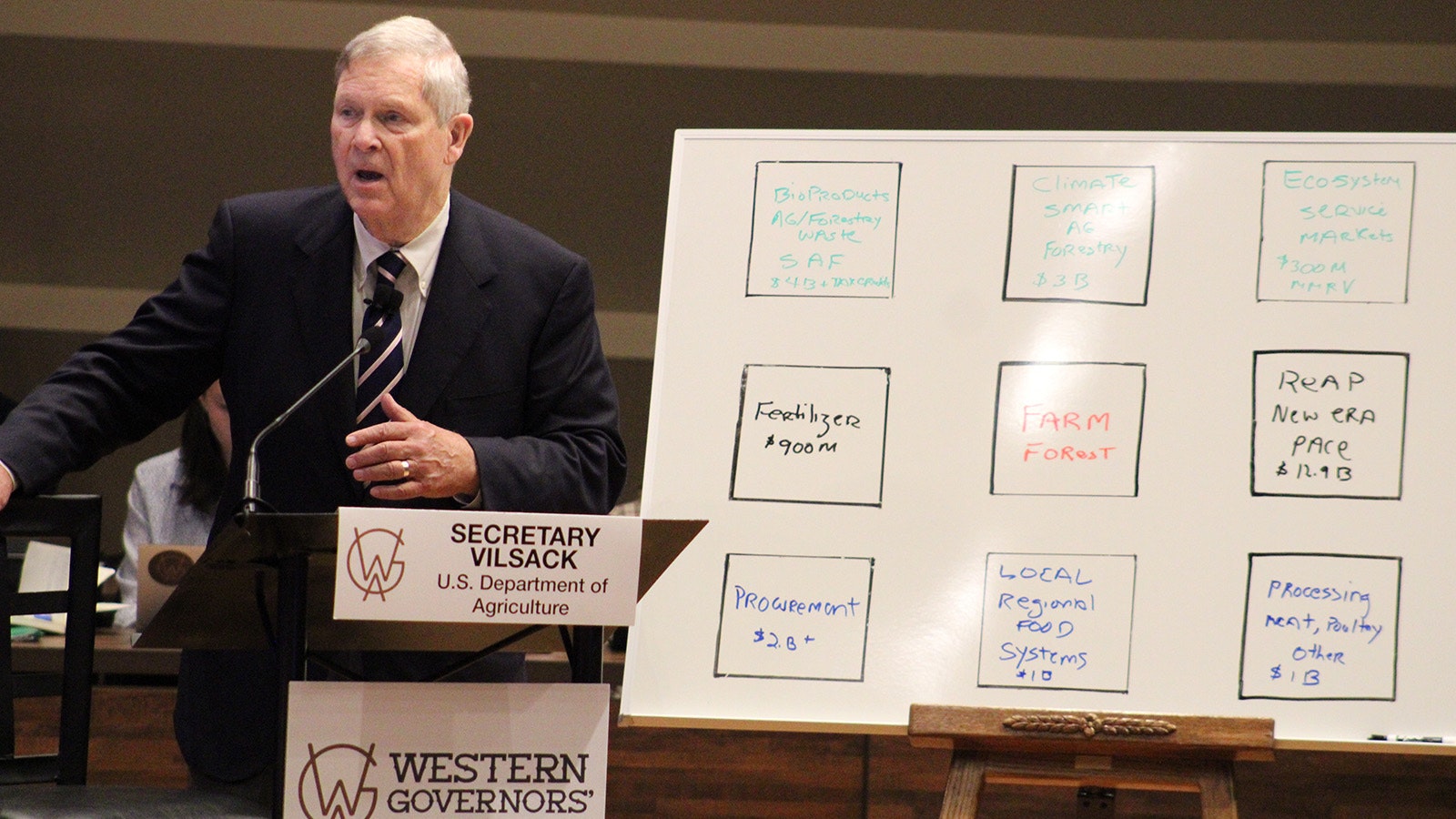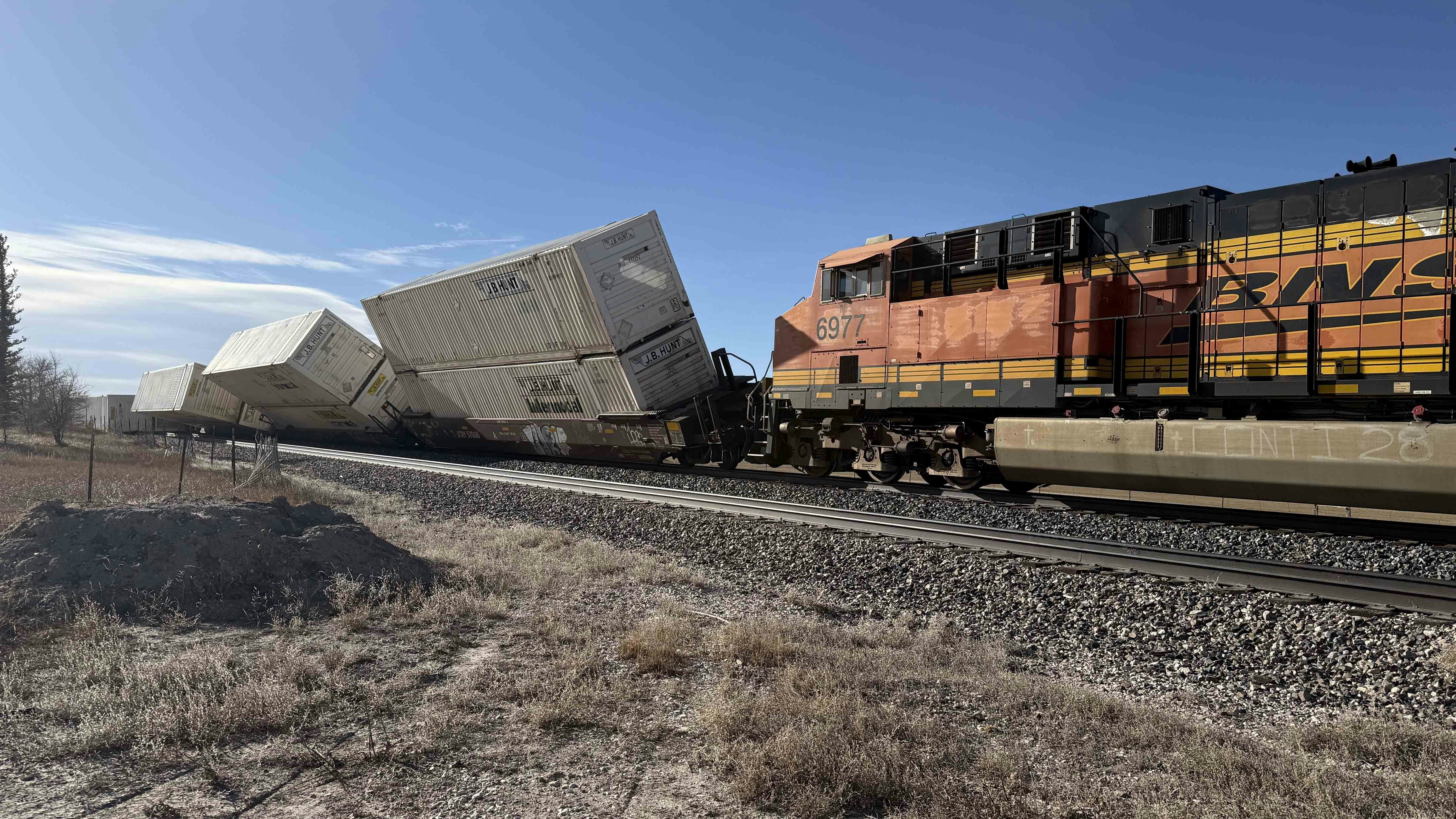JACKSON — U.S. Secretary of Agriculture Tom Vilsack believes America’s small farmers need help through significant government intervention while defending the Biden administration’s ongoing efforts to fight climate change, including through reducing methane output from cattle.
He was presenting Tuesday at the Western Governors’ Association meeting in Jackson, Wyoming.
Over the last 42 years, the Department of Agriculture estimates that 437,300 American farms have disappeared. By and large, farming has become more consolidated as well, with 89% of the industry’s income shared by 7.5% of the producers. Additionally, 141.1 million acres of farmland has been removed.
Vilsack questioned a panel of five Western governors, including Wyoming’s Gov. Mark Gordon, if they are OK with these statistics. He said the numbers not only reflect a decline of farming, but also a loss of rural community and culture.
“If we are (OK), we need to say that and we need to basically make sure that people understand the consequences of saying it’s OK,” Vilsack said.Those are “the consequences of shrinking rural communities and the significant role that they play in life and the values of this country.”

He believes American agriculture has been set up in a way where “you either get big or you get out,” and he wants to incentivize more people to enter the agriculture marketplace.
“I would say the statistics would suggest that we’re not (helping) until recently,” he told Cowboy State Daily. “I think we were not, I don’t think the country was fully aware of the magnitude of loss of the number of farmers and the number of acres that have been lost in the last 40 years.”
Vilsack said it’s a problem of economics. Although 2022 was the most profitable year for agriculture in American history, nearly 50% of U.S. farms didn’t make a profit and nearly 40% of producers only made a profit from off-farm income.
Everyone's Not OK
In response to Vilsack's presentation, Wyoming Farm Bureau Director of Public and Governmental Affairs Brent Moline told Cowboy State Daily that it's not that simple and that, despite perceptions that agriculture is polluting and bad for the environment, "almost without exception, all ag operators use great environmental practices."
It's a simple equation, Moline said: "They have to, to keep the land productive."
Monetary Solutions
Vilsack said President Joe Biden’s administration has rolled out many incentives and subsidies to help try and spur entrepreneurship through the development of small and mid-sized farms, a demographic of particular decline within the agriculture industry. This has been based on administration priorities of addressing climate change, reducing cost of operations and developing better local and regional food systems.
The administration is using $3 billion to reward farmers for using environmentally friendly farming practices, Vilsack said. They also guarantee these same farmers a premium from the market with the development of a “climate smart commodity.”
Vilsack said they will also use $300 million from the Inflation Reduction Act to measure and monitor the results of climate-friendly agriculture and forestry practices they will reward.
Vilsack also wants land grant schools like the University of Wyoming to engage with their students to inform them that young people are aware of how they might be able to increase their revenue streams for small and medium farms.
“There’s a lot of money being invested in the system,” Vilsack said. “Hopefully, by virtue of those investments, we see what works and as we see what works, we incorporate that in future departments so it becomes an integral part of a real alternative.”
Biden also recently announced $5 billion specifically to help rural states, nearly $1 billion of which is allocated for Western states.
More Than Money
It's OK that that the big conglomerates make money, Moline said, adding that it's a little simplistic for the administration to say it wants to help small producers.
"There are so many factors affecting size of ag operations and the profitability of those operations," he said. "We need to look at keeping the whole production ag sector profitable, not target just the small. Many of the small farms are used as hobby farms, something to supplement the owners' income so they can afford to not live in town.
"Land near urban areas have been facing pressure for years to be subdivided because persons wanting houses are willing and able to pay much more than what ag can afford. This is not new, it has been going on for decades."
He also said that when it comes to shaping national agriculture policy, "other aspects of the general economy need to be addressed. Many times, one spouse will need to work off the farm or range just to get health insurance. What is being done to address our hight cost of medical care?"
Moline offered his own situation as an example.
"I own 35 acres outside of town," he said. "I got this property more for being able to have a few head of livestock, mainly for my children to have chores to do with both being in 4-H and FFA.
"I knew I would never show a positive economic return, but the lifestyle for my family was very dang important. I think this is something my family has with a lot of small operations."
Methane And Cows
The federal government also is providing incentives for farmers to reduce their methane output, which results from bowel movements of cows and other livestock. The overall impact of cattle methane emissions on climate change has been a political flashpoint, including in Wyoming.
U.S. Rep. Harriet Hageman recently reacted to a European Union initiative to kill cows to reduce their impact on the climate as “the left inadvertently telling the truth about what they had in store for those of us in the real world.”
According to the USDA, the population of U.S. cattle has steadily declined from 1998 when there were nearly 100 million head to now at about 89 million.
The tricky part of the administration’s slate of goals is that reducing methane output at least somewhat runs contradictory to the goal of adding more farms in America, as more livestock generally means more methane.
Gordon touted Wyoming’s land management practices and efforts on carbon capture and sequestration. He complained to Vilsack that the government is trying to regulate methane production too much.
“Now deer, elk, moose are all ungulates, so they all have that as well,” Gordon said about their methane contributions. “Rather than putting the heavy hand of government down on the regulatory side … trying to figure out ways to innovate and incentivize people to do the right thing to recognize that a direct relationship with the marketplace is far superior to any kind of regulatory landscape.”
Vilsack agreed and mentioned projects such as removing methane from manure and paying farmers more for their products to make up for owning less livestock.
Utah Gov. Spencer Cox said farmers have become “villains” within the conversation of drought affecting the West. He said it’s challenging for farmers to become innovative when they don’t have any money to do so. He encouraged staff from USDA to provide options for farmers to pursue these opportunities.
Robert Bonnie, the undersecretary for farm production and conservation at USDA, said the average American farmer produces much lessgreenhouse emissions than in other parts of the world.
“One of the things that gets lost in conversations about sustainability, climate and other things is the importance of maintaining agricultural productivity,” he said.
The Big Four
Vilsack said the Biden administration also is taking steps to expand meat processing in the U.S. The “Big Four” U.S. beef processing companies —Tyson Foods, JBS, Cargill and Marfrig — control around 85% of feedlot cattle in the U.S.
Vilsack said his administration has invested in nearly 400 projects to expand meat and poultry production across the country since taking office.
The administration also has a small processing program with a goal is to provide additional assistance for very small processors to expand. They also have a tribal initiative that allows the tribes to create their own processing for wild game like bison, and loan guarantee and credit programs designed to make it easier to get funding for expanding existing processing facilities.
In the end, all the talk about investing in small farmers and subsidizing methane control on cattle is a lot of smoke and mirrors by professional bureaucrats, Moline said.
Like many who live in Wyoming, "I wonder what this will do to the price of food or to the cost of government?" he said. "Somebody, somehow will have to pay for these illogical programs."
Leo Wolfson can be reached at leo@cowboystatedaily.com.





